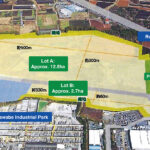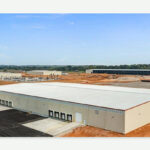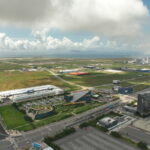ASIA ELECTRONICS INDUSTRYYOUR WINDOW TO SMART MANUFACTURING
Toray Creates New Energy-Saving Film for Electric Vehicles
Toray Industries, Inc. has developed a high heat-insulating solar control film for advanced mobility applications. The film draws on the company’s innovative nano-multilayer technology to deliver transparency comparable to that of glass. Also, it offers world-class thermal insulation from the sun’s infrared rays.
In deploying this film on electric vehicles and other advanced mobility applications, Toray demonstrated that the film can cut air-conditioning power consumption. Additionally, it found that the film extends cruising ranges and improves cabin comfort through excellent thermal insulation. It also showed that the film supports 5G communications, whose high radio wave transmittance is essential for autonomous driving.
Global warming has made it vital to conserve energy and cut carbon dioxide emissions. Accordingly, the spread of electric and fuel cell vehicles has accelerated. Further, this increased the need for better thermal insulation to enhance cruising ranges and ride comfort.

Toray’s PICASUS™ (note 1) is a nano-multilayer film featuring several hundred to one thousand layers with nanoscale thicknesses polymer layers. Toray enhanced this technology to control the thickness of each layer at the nanometer level. Thereby, it innovated a high heat-insulating nano-multilayer film (note 2) offering an outstanding transparency and insulating performance that is hard to attain with conventional technologies.
Toray applied this film to the windshield of an electric vehicle. Specifically, it cuts air-conditioner power consumption during summer driving by around 30%; thus, extending the cruising range by about 6% (note 3). Also, the company confirmed that the film boosts passenger comfort by reducing body temperatures in summer by 2°C from the levels recorded with regular heat-insulating windows (note 4).
Electric vehicles employ a range of communication devices to enable automated driving and increase safety. Thus, it is important to improve radio wave transmittance to support the 5G mobile network.
While the metallic sputter glass that some automobiles incorporate offers superb heat insulation, it impedes radio wave transmission. Toray’s film delivers both outstanding insulation and transmittance, as it is metal-free.
Moreover, Toray tests film for automotive windshields and sunroofs. It is conducting full-fledged customer assessments with a view to deploy the film commercially on vehicles. As well as improving cruising ranges and comfort, Toray’s film technology should contribute to carbon neutrality in advanced mobility through its high radio wave transmittance and help expand connected and automated driving technologies.
Generally, Toray will keep leveraging core technologies in organic chemistry, polymer chemistry, biotechnology, and nanotechnology to undertake R&D and conceive innovative materials that drive fundamental social change. In so doing, it will endeavor to materialize its corporate philosophy contributing to society by creating new value through innovative ideas, technologies, and products.
Notes:
1. PICASUS™ is the collective name for polyester films that leverage Toray’s proprietary nano-multilayer technology. The PICASUS lineup includes metallic luster films that uniformly interfere with and reflect light from visible to near-infrared rays, films that can cut blue light from displays without coloring them, and dichroic films that selectively reflect specific colors.
2. This thermal insulating nano-multilayer film is the fruit of revolutionizing layer design technology to control film layer thicknesses. World-class heat insulation stems from controlling the reflection of visible light while solely improving infrared ray blocking by inserting layers that are tens of nanometers thick, with thickness controls in one-nanometer increments. Conventional nano-multilayer films alternate layers with thicknesses of around 100 nanometers.
3. Finding from model testing on environmental chassis dynamometer using windshield laminated with this heat-insulating solar control film.
4. Applied this this heat-insulating solar control film to glass and used a solar simulator in using thermography to measure skin temperature through glass under simulated sunlight.




